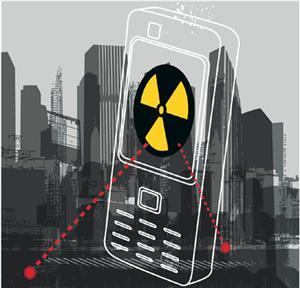Nuclear monitoringMonitoring nukes with social media
Acting Undersecretary of State for Arms Control Rose Gottemoeller is actively trying to find a way to incorporate social media tools to prevent nuclear weapons proliferation and keep fissile materials out of the hands of terrorists; the department wants to have crowdsourcing tools developed that could help ordinary citizens monitor a government’s nuclear activity and whether it was adhering to its stated promises

Cell phone add-ons and social media combine to monitor nukes // Source: textually.org
State Department officials are seeking to use social media to help track nuclear weapons.
Acting Undersecretary of State for Arms Control Rose Gottemoeller is actively trying to find a way to incorporate social media tools to prevent nuclear proliferation and keep fissile materials out of the hands of terrorists.
In an interview with WBUR in Boston, Gottemoeller wondered if social media can help the governmentto “understand what’s going on with a nuclear facility in a certain country, for example, or what’s going on with the production of chemicals at a chemical plant.” Or, she continued, if social media could be used to determine the number and status of deployed nuclear warheads.
“As we look to the future of nuclear arms reductions, for example, we’re concerned about going after smaller objects like warheads and monitoring warheads,” she said. “How can we be helped by the kind of information that’s readily available throughout the cybersphere?”
Gottemoeller recently called on programmers and engineers to help develop crowdsourcing tools that could help ordinary citizens monitor a government’s nuclear activity and whether it was adhering to its stated promises.
Firms are already hard at work developing smartphone apps that can detect radiation, so eventually it may become a reality where ordinary citizens can harness the power of Twitter and Facebook to track radiation in their neighborhoods.
As an example of the potential for social media to assist in monitoring foreign nuclear activity, Joe Cirincione, the president of the Ploughshares Fund, pointed to the Institute for Science and International Security which has been posting satellite photos of nuclear sites in Iran for several years.
“What used to be the sole tool of great states can now be purchased by an NGO,” he said. “You can imagine how you can take that kind of transparency and verification technologies that satellites give you, marry it up to the networking capabilities that Facebook, Twitter and the Web give you, and you can really start to imagine a verification regime that would make it very difficult for any state to hide a significant nuclear capability.”
Gottemoelleris also hopeful that if crowdsourcing for nuclear proliferation becomes more common, it could help increase trust between ordinary citizens and their government.
“We think that this is a realm where governments can actually partner with their citizens in order to make the case that they are fully living up to their arms control obligations,” she said.
In contrast, not all government officials are as enthusiastic about the idea of crowdsourcing and using social media to monitor the covert work of governments. Furthermore revelations that the FBI, DHS, and other law enforcement agencies monitor social media have resulted in sharp criticism from privacy advocates who fear this is a violation of privacy at home and espionage abroad.
“If people try to organize groups along this basis, I would think those states could say that that’s a violation of the state’s monopoly on this function, and you could say it’s an act of treason or espionage, and people may be putting their lives at risk,” said George Perkovich, a nuclear policy expert with the Carnegie Endowment for International Peace.
